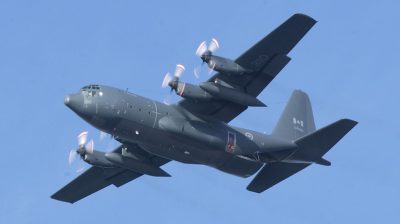 Search and rescue efforts by the RCAF and the volunteer-run Civil Air Search and Rescue Association (CASARA) are becoming more effective with the implementation of the Cellular Airborne Sensors for Search and Rescue (CASSAR) system. This new innovation allows suitably equipped SAR aircraft to communicate with an overdue person’s cellphone as long as the device is turned on, not in airplane mode and has some battery life left.
Search and rescue efforts by the RCAF and the volunteer-run Civil Air Search and Rescue Association (CASARA) are becoming more effective with the implementation of the Cellular Airborne Sensors for Search and Rescue (CASSAR) system. This new innovation allows suitably equipped SAR aircraft to communicate with an overdue person’s cellphone as long as the device is turned on, not in airplane mode and has some battery life left.
CASSAR is currently installed on certain RCAF CC-130H Hercules and are currently based at 19 Wing Comox (B.C.), 17 Wing Winnipeg (Man.) and 14 Wing Greenwood (N.S.). Since the fleet of Airbus CC-295 Kingfisher SAR aircraft, the designated replacement for the de Havilland Canada CC-115 Buffalo, have yet to become operational, the system is only deployed on the RCAF’s Hercules.
“With such a vast area [as Canada], an enabling technology like the CASSAR system augments the existing search and rescue capability, reduces search time, and improves outcomes; a positive addition to search and rescue operations,” said Lieutenant-General Steve Boivin of Canadian Joint Operations Command.
The RCAF asserted that the CASSAR system will only be used in search and rescue operations to locate and communicate with persons who have been reported missing, and that it will not be used to intercept personal communication.
“We are extremely pleased with what CASSAR has to offer to our crews and are equally as pleased to see it in action, as it enhances our crews’ collective search and rescue capabilities – this is a capability that will surely save lives,” said Major-General Chris McKenna, 1 Canadian Air Division Commander.
